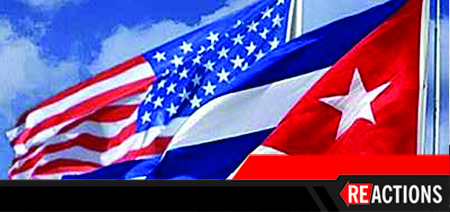With ties opening again between the U.S. and Cuba, academics are wondering when they will be able to return to the country for study. Associate Professor of History Patrice Olsen led seven visits to Cuba before the travel ban, and taught courses on U.S. covert operations in Cuba. One of the many things that struck her was the connection Illinois has with the island nation.
Olsen:
I first went to Cuba in 1999 for course offerings in human rights. I wanted to see and experience and judge Cuba for myself.
The Cubans we met were very open with their revolutionary history and the difficulties encountered in daily life. With students, we took the path of the revolution from Santiago through the Sierra Maestra Mountains to Havana. We saw where the Bay of Pigs happened, and talked to locals about it. We observed organic farming and saw how Cubans are getting by with so little – the hardships as well as strengths.
In talking with people – whether academics at the University of Havana, farmers or workers – you find a deep desire to be understood, and a feeling they are misunderstood. Cuba is still on the official list of states that sponsor terrorism. It’s a major bone of contention before diplomatic relations can be improved. Everyday Cubans are adamant about not being lumped in with ISIS and Hezbollah.
Cubans will also remind you – nicely – that the U.S. government did try to destabilize the Cuban government 435 times – yes that is four hundred – by trying to take out Fidel Castro. They tried with everything from exploding seashells, a plot exposing him to LSD before a radio interview, to making him come into contact with thallium so all his hair would fall out and make him look less “manly.”
Illinois has a symbolic place of honor in Cuba because of Gov. George Ryan, who led a delegation there. It had immense impact throughout the island. Illinois is also recognized as helping with the revolution in an indirect way. In the central plaza of Santa Clara stands a Caterpillar tractor. During the Battle of Santa Clara in 1958, Che Guevara captured a railway line to end the dictatorship of Batista. They cut the railroad line with a Caterpillar tractor from Peoria.
When my students would go to the capital, locals would find out they were from Illinois and suddenly there were rounds of hugs and photos taken. They were thanking us for our part in the revolution. We were consistently met with kindness and respect, as well as keen interest in our lives and our government’s foreign policy. The level of civic engagement and knowledge of U.S.-Cuban foreign relations was intense at times. Schoolchildren could discuss the fine details of the Helms-Burton Act, for example. Cubans tend to be quite adept at making distinctions between U.S. government action, and U.S. citizens: while they may despise a particular policy, they do not hold us responsible for it as individuals.
The opening of relations between the U.S. and Cuba means whatever both nations want it to mean. There are many issues that still need to be discussed – from human rights to the idea of security to the status of the U.S. base at Guantanamo. Since 1959, both the U.S and Cuba have been remarkably adept at shooting ourselves in the foot when it comes to actually making progress on relations. One of the members of the Cuban General Assembly described it to me as “going through life with one foot in a bucket and one on a banana peel.”
But it is time for us to return to Cuba. We can travel to China and the former Soviet Union, and make judgments for ourselves about those areas. Perhaps it’s time for students to get back to Cuba, and do the same.
Olsen has taught numerous courses on Cuban history and has been a member of the seminar on security issues at the Institute for the Study of the United States, coordinated by the University of Havana. She can be reached via MediaRelations@IllinoisState.edu.
– See more at: http://

